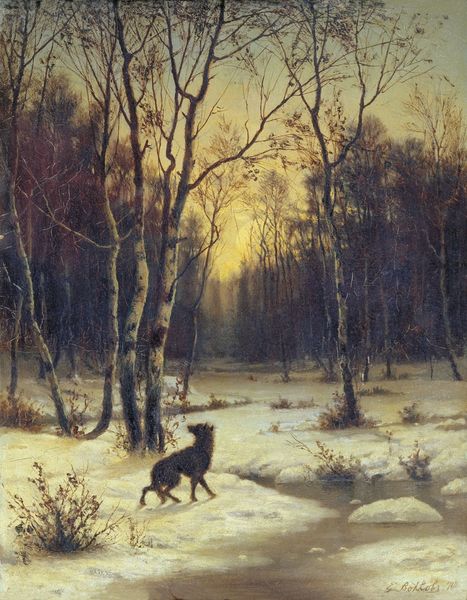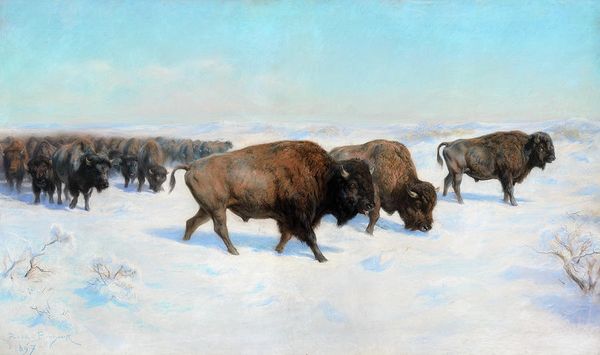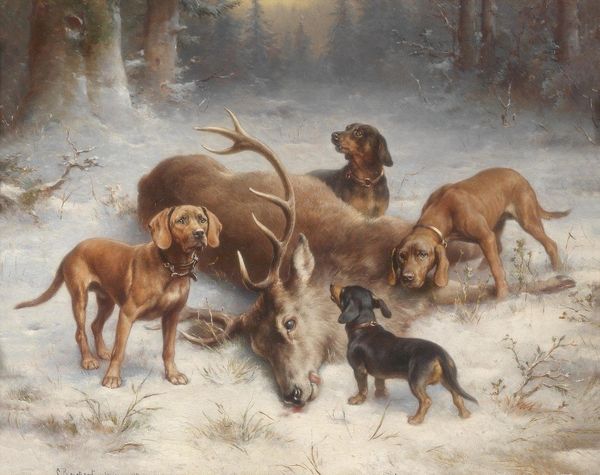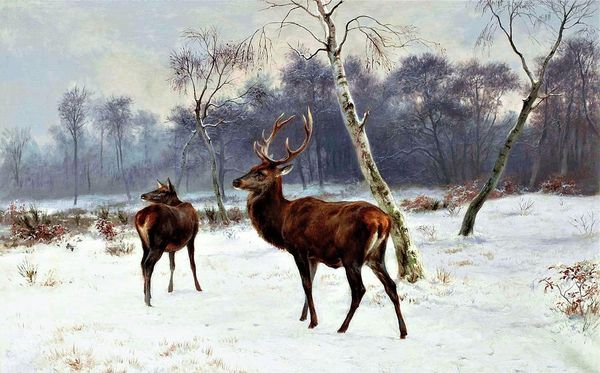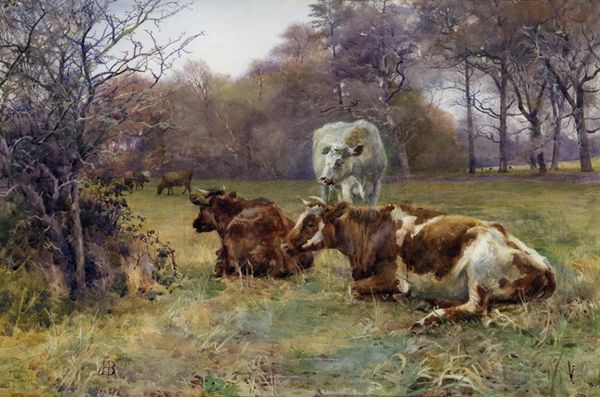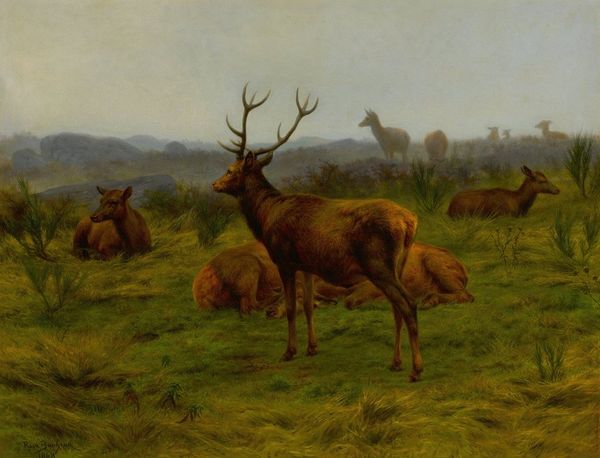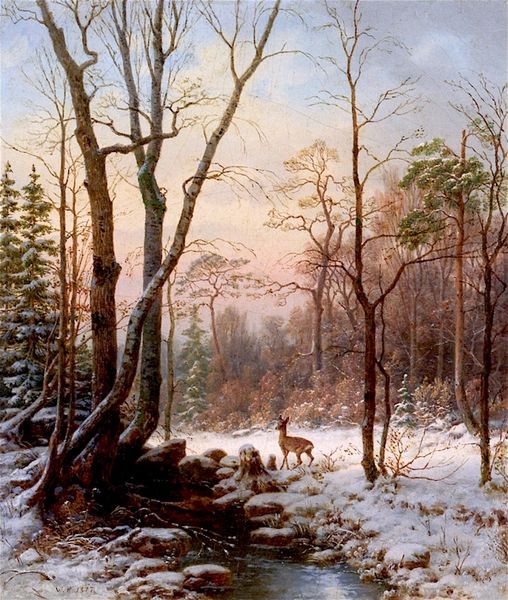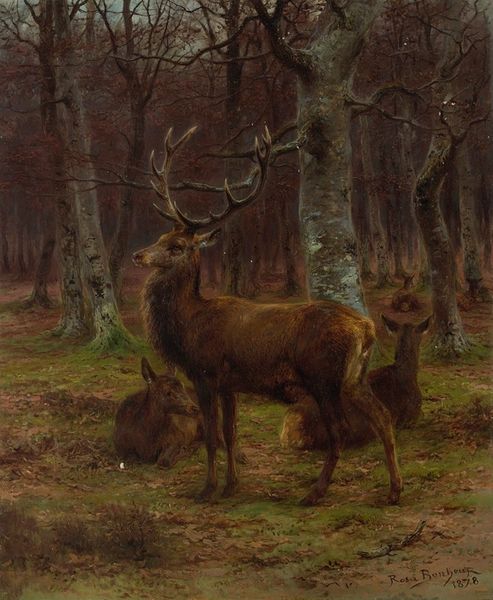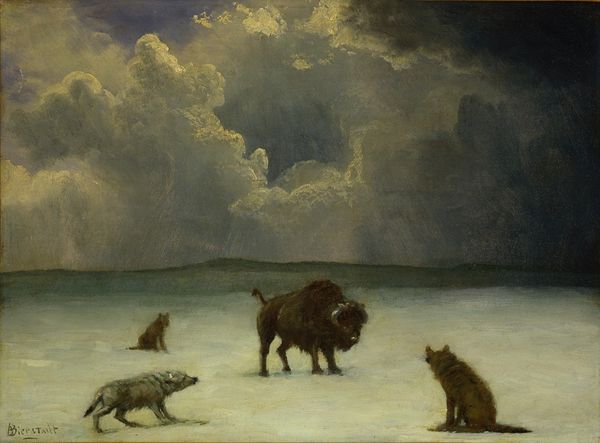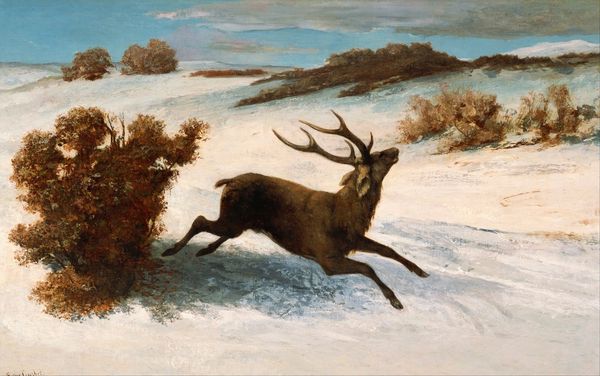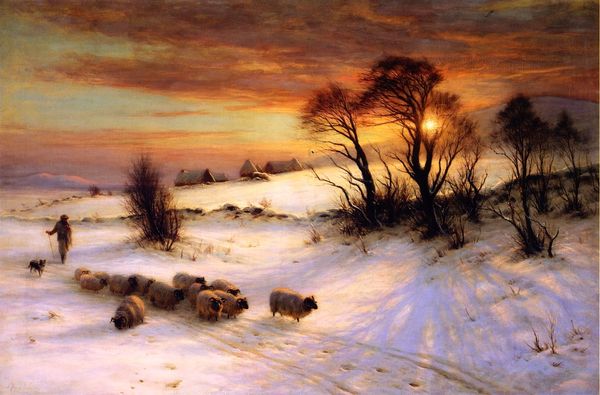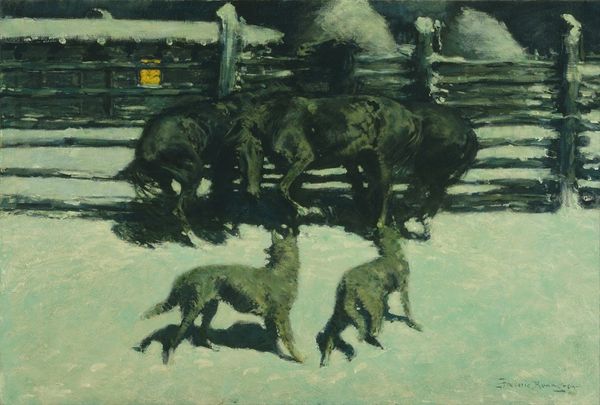
painting, oil-paint
#
painting
#
oil-paint
#
landscape
#
romanticism
#
realism
Copyright: Public domain
Rosa Bonheur created "Wild Boars in the Snow" using oil paint sometime in the mid-19th century. Bonheur, working in France, gained fame for her realistic and dignified depictions of animals, a subject often relegated to the lower rungs of the academic hierarchy. But this wasn't just about artistic status. In a rapidly industrializing France, Bonheur's art offered a nostalgic look at rural life and the natural world. The wild boars, rendered with careful attention to their muscular bodies and earthy tones, aren't just animals; they are symbols of a disappearing wilderness. The lack of sentimentality is notable; she avoids idealizing her animal subjects. Bonheur's commitment to realism extended to her personal life as well. She challenged gender norms by pursuing a career as an artist, obtaining a permit to wear trousers so she could freely study animal anatomy at farms and slaughterhouses. By studying Bonheur and her paintings in the context of French social history, using resources such as exhibition records, critical reviews, and biographical material, we can appreciate the complex ways in which art both reflects and shapes our understanding of the world.
Comments
No comments
Be the first to comment and join the conversation on the ultimate creative platform.
